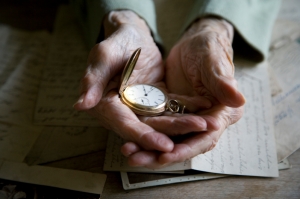Trusts – Protection For The Healthy Spouse
 The Medicaid law provides special protections for the well spouse of a nursing home resident to make sure she has the minimum support needed to continue to live in the community. The so-called “spousal protections” work this way: If the Medicaid applicant is married, the countable assets of both the community spouse and the institutionalized spouse are totaled as of the date of “institutionalization”, which is the day on which the ill spouse enters either a hospital or a long-term care facility in which he or she then stays for at least 30 days.
The Medicaid law provides special protections for the well spouse of a nursing home resident to make sure she has the minimum support needed to continue to live in the community. The so-called “spousal protections” work this way: If the Medicaid applicant is married, the countable assets of both the community spouse and the institutionalized spouse are totaled as of the date of “institutionalization”, which is the day on which the ill spouse enters either a hospital or a long-term care facility in which he or she then stays for at least 30 days.
In general, the community spouse may keep a little over $100,000. Called the “community spouse resource allowance,”this is the most the Commonwealth will allow a community spouse to retain.
Example: If a couple has $100,000 in countable assets on the date the applicant enters a nursing home, he or she will be eligible for Medicaid. If a couple has $150,000 in countable assets, the couple can keep approximately $102,000 and must “spend-down” the remaining $48,000 in order to be eligible for Medicaid. However, in almost every case, the $48,000 can be protected with proper planning, even if this occurs after the person has been admitted to the nursing ome—despite what nursing home social workers and even Medicaid officials will tell you.
In all circumstances, the income of the community spouse will continue undisturbed; he or she will not have to use his or her income to support the nursing home spouse receiving Medicaid benefits. But what if most of the couple’s income is in the name of the institutionalized spouse, and the community spouse’s income is not enough to live on? In such cases, the community spouse is entitled to some or all of the monthly income of the institutionalized spouse. This is called the income-first rule. How much the community spouse is entitled to depends on what the Medicaid agency determines to be a minimum income level for the community spouse. This figure is known as the minimum monthly maintenance needs allowance or MMMNA and is calculated for the community spouse according to a complicated formula based on his or her housing costs. The MMMNA may range from a low of about $1,800 to a high of $2,500 a month.

Therefore, if the community spouse’s own income falls below his or her MMMNA, the shortfall is made up from the nursing home spouse’s income. The community spouse is first entitled to keep all or a portion of the institutionalized spouse’s income. If that is not sufficient, the community spouse is permitted to keep more assets.
Watch what happens with the following scenario however. Men die before women and a married man enters a nursing home before a married woman. Remember these are children of the Depression. Dad worked, mom stayed at home. While dad may have $1000 a month in social security benefits, and a pension, mom stayed at home, cooked dinner and raised the kids. If she has any income at all, it’s usually two or three hundred dollars in social security benefits. Under this rule, when dad enters a nursing home, mom will be allowed to keep most (and perhaps all) of Dad’s income. But when dad dies, the pension may die with him and dad’s social security payment (even with the widow’s benefit) will be drastically decreased, leaving the widow with almost no monthly income.
Here’s another example: Mr. and Mrs. Smith have a joint income of $2,500 a month, $2,000 of which is in Mr. Smith’s name and $500 is in Mrs. Smith’s name. Mr. Smith enters a nursing home and applies for Medicaid. The Medicaid agency determines that Mrs. Smith’s MMMNA is $1,800 (based on her housing costs). Since Mr. Smith also may keep a $70 a month personal needs allowance, his obligation to pay the nursing home is only $630 a month ($2,000-$1,300-$70=$630) and Mrs. Smith keeps $1,300 of Mr. Smith income. Let’s hope dad’s pension has a survivor benefit.
In exceptional circumstances, community spouses may seek an increase in their MMMNA either by appealing to the Medicaid agency for “hardship” or by obtaining a court order of spousal support. Regrettably, but not surprisingly, there are no hardship regulations. Courts, however, will frequently issue spousal support orders or QDRO’s.
It is important to note that for most married couples, regardless of what well-intentioned friends, advisors and state workers may say, we can usually design a plan so the couple can retain all assets. (Note: we are not in the position, however, to save the second home.)
